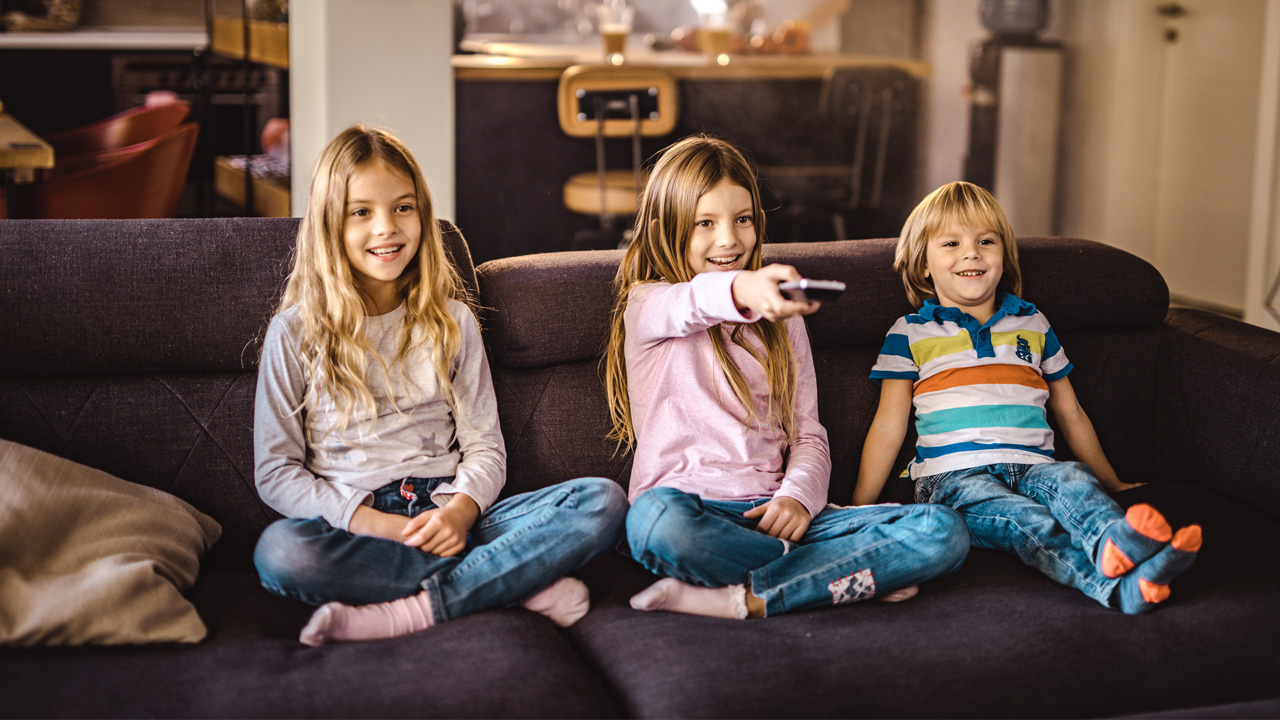Recently, I decided to reframe how I look at screen time, and tweaked the way we handle TV watching in four small but meaningful ways.
It’s Saturday morning, and I’m watching TV with my kids when an error message pops up on the screen.
“I know how to fix this,” my seven year old announces, jumping up and manipulating the cable box, then cycling through input options on the remote before getting us back to our show.
“How do you know how to do that?” I ask, realizing that maybe I need to take a course in cable box jiggling.
She shrugs her shoulders: “It happens a lot, and I watch a lot of TV.”
Straight out of the mouths of babes.
She’s right, though. My kids watch much more TV than they did in the Before Times, when we had the distraction of extracurricular activities, play dates, birthday parties and outings. Last March, when the pandemic first hit and we started isolating at home, TV was a necessary babysitter. Between working full-time, navigating distance learning, figuring out how to get groceries and managing my COVID anxiety, I had only so much bandwidth to care for my young kids in a hands-on kind of way. And so the TV went on, and stayed on for what felt like months.
But, as the pandemic draws on, and knowing it won’t be over any time soon, I’ve been feeling increasingly conflicted over how much screen time my kids get, and I know I’m not alone. In the past year, kids’ screen time has more than doubled, from around of 2.6 hours daily, up to 5.8 hours, according to a study out of Western University in London, Ont.
When I’m offering myself grace, I realize that TV is still a necessity with two kids under eight, neither of whom are particularly independent. If my husband and I have Zoom meetings at the same time, putting TV on is the only way we can get through uninterrupted. But on guilty days, I’m cognizant of the fact that they already spend so much time in front of screens. Between virtual field trips, online hang-outs with family and Zoom Brownies, their life is becoming more sedentary, their world flickering in front of them on a box. Kids need “unplugged” time—including daily outdoor play, according to an article out of Harvard Medical School. I spent so much of my parenthood being told to limit screen time, but no one ever prepared us for a global pandemic and months of stay-home orders, right?
Recently, I decided to reframe how I look at screen time, and tweaked the way we handle TV watching in four small but meaningful ways.
1. My kids now earn their TV time
If they want to watch a show, they have to pay with a pom-pom, and they earn pom-poms by either doing simple chores, like tidying the shoes at the door or setting the table for dinner. Or, they can spend 15 minutes engaging in activity like colouring, reading or playing. Ideas for chores and activities are written on Popsicle sticks in the kitchen, so they need minimal help from me. This tactic has made my kids a lot more appreciative of screen time. And because their pom-pom stash isn’t usually very robust, they often have to take a break between episodes to come earn more. Sometimes, they forget about their show altogether.
2. I’m more discerning about programming
When they get sucked into a Netflix free-for-all, my kids end up watching wildly inappropriate shows for their ages, and fight constantly over who gets to choose the next one. Now, I steer them toward specific TV networks with programming geared toward their ages, or else I pick the show for them, focusing on ones that hold a bit more value (my faves are Odd Squad, Let’s Go Luna, or If I Were An Animal). My kids still might get more TV than they used to, but they also learn about hibernation, where Brazil is and how fractions work.
3. We have TV time together
As part of my commitment to be more present with my children, I’m trying to watch more TV with them—and wow, they really love it. Plus, it lets me engage with them about the show afterwards. Last week we watched an episode of Wild Kratts about flamingos and afterwards, we downloaded and listened to a kids’ podcast all about flamingos to keep the conversation going.
4. No TV after dinner
There’s some evidence to suggest that screen use close to bedtime can impact our sleep cycles. So unless it’s a special treat or a movie night, we try to keep the TV off after 6 p.m. Instead, I’m trying to find more meaningful ways to spend “offline” time together in the evening, like playing board games, reading, listening to podcasts or meditating—a wonderful new wind-down activity we’ve started before bed.
Ultimately, I’m not curbing screen time so much as I am trying to pivot how we use screen time so it offers us all a bit more value. I do think TV is an important way for my kids to decompress, and for me to get work done (or have a coffee and stare at a wall), and in the absence of play dates, extracurricular activities, after-school care, and mild weather for outside play, age-appropriate TV watching is saving our collective sanity. But I also think there’s a balance to be struck.
If I’ve learned nothing else from the past year, it’s that I need to extend myself grace and permission to get through this really difficult time in a way that keeps the whole family sane, balanced, happy and healthy. I think our new TV system is helping.
